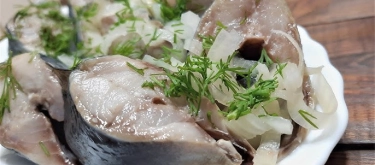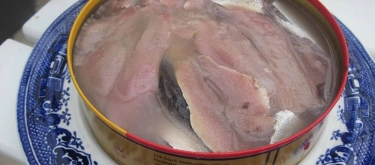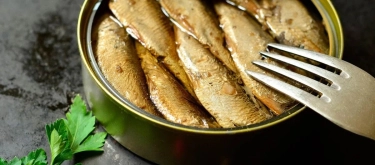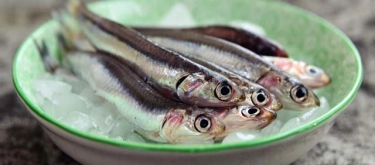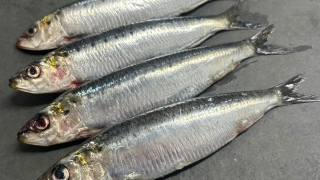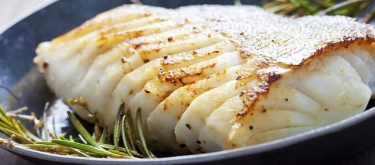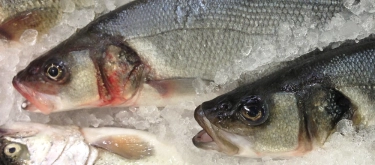Herring: Taste Profile, Aroma, Benefits and Health Risks
Herring, often referred to as "herring," is a flavorful, oily fish with a culinary tradition deeply rooted in Northern and Eastern Europe. Popularly enjoyed pickled, salted, smoked, or marinated, herring occupies a distinctive place in culinary traditions from Scandinavia to Eastern Europe. Its distinctive, robust flavor and versatility in preparations—from appetizers and salads to sandwiches—underscore its popularity and culinary importance worldwide.
Herring (commonly sold as pickled or salted "herring") is unsuitable for vegetarians, vegans, and those allergic to fish or seafood. It is naturally gluten-free but often processed in marinades or sauces containing potential allergens, including mustard, vinegar, or spices. High sodium content in salted herring requires moderation for those with dietary sodium restrictions.
What does Herring taste like?

Complete Sensory Description
Taste:
Herring has a distinctly rich, savory, briny flavor with subtle sweetness and gentle acidity, especially pronounced in pickled or marinated varieties. Its pronounced fishiness can be balanced or intensified depending on preparation and accompanying ingredients.
Aroma:
Fresh herring emits mild marine aromas, while preserved varieties have pungent briny scents, sharp pickled notes, and aromatic herbal fragrances, enhancing appetizing appeal.
Texture:
Herring meat is firm, dense, and tender. Pickled or marinated varieties offer a succulent yet slightly firm, pleasantly chewy bite. Freshly salted or smoked herring develops a firmer, flakier texture.
Appearance:
Fresh herring has shiny, silver-blue skin, while processed (pickled, salted, smoked) varieties typically exhibit creamy-white to pale pinkish-gray interiors. Pickled herring often appears opaque white or cream-colored with marinades, herbs, or spices.
Varieties and Culinary Uses
-
Pickled Herring:
Popular in Northern European cuisines as appetizers or traditional dishes, marinated in vinegar, sugar, onions, spices, and herbs. -
Salted Herring:
Traditional preserved form, used widely in salads, sandwiches, or served simply with potatoes, onions, and sour cream. -
Smoked Herring (Kipper):
Richly flavored, ideal in sandwiches, breakfast dishes, or as snacks; adds smoky, savory depth to culinary preparations. -
Fresh or Fried Herring:
Enjoyed grilled, pan-fried, or baked, offering rich taste and firm, flaky textures.
In-depth Flavor Analysis
-
Rich & Briny Character:
Herring’s dominant savory, briny taste provides bold flavor and complexity, balanced by subtle sweetness or gentle acidity, especially when pickled. -
Umami & Savory Depth:
Herring’s natural umami amplifies savory notes, making it a flavorful and satisfying culinary choice. -
Smoky and Preserved Influence:
Smoking or pickling herring intensifies savory, complex flavor profiles, enhancing culinary richness, depth, and gourmet appeal. -
Flavor Evolution:
Processing methods significantly alter herring flavor, transforming fresh, mild tastes into intensely savory, sweet, or tangy culinary experiences, popular across many cuisines.
Culinary Applications
-
Pickled and Marinated Dishes:
Central to Scandinavian smørrebrød, German rollmops, Russian salads (e.g., “herring under a fur coat”), enhancing traditional flavors. -
Salads and Appetizers:
Incorporate herring in potato salads, beetroot salads, or seafood appetizers, providing depth, flavor, and nutritional richness. -
Sandwiches & Snacks:
Use smoked or pickled herring in sandwiches, wraps, or open-faced toasts paired with sour cream, onions, capers, or eggs. -
Traditional Meals:
Served alongside boiled potatoes, rye bread, sour cream, or as part of traditional festive or cultural dishes.
Selection and Storage
Selecting Quality Herring:
- Choose fresh herring with shiny skin, clear eyes, mild ocean scent, and firm flesh.
- Pickled or salted herring should appear firm, without discoloration or sliminess, and with an appealing briny aroma.
Storage Recommendations:
- Fresh herring must be refrigerated below 4°C (39°F) and consumed within 1–2 days.
- Pickled or marinated herring should remain refrigerated, consumed within recommended dates or typically within 10–14 days after opening.
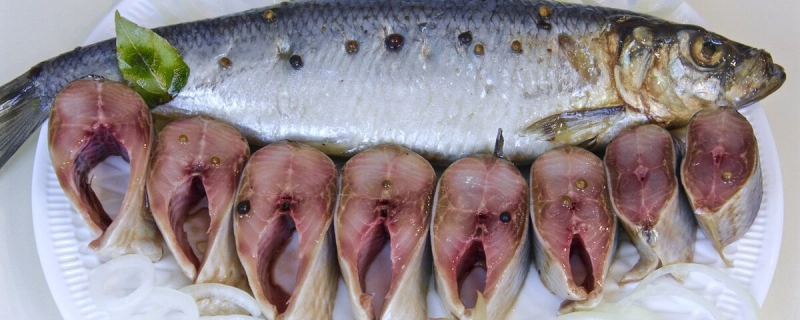
Nutritional Insights
-
High Omega-3 Fatty Acids:
Rich in omega-3 fatty acids, beneficial for cardiovascular health, reducing inflammation, and cognitive function. -
Excellent Protein Source:
Provides high-quality protein essential for muscle maintenance, growth, and overall nutritional health. -
Rich in Vitamins and Minerals:
High in vitamin D, vitamin B12, selenium, iodine, and phosphorus—important nutrients supporting immune function, bone health, and energy metabolism. -
High Sodium Content:
Salted or pickled herring contains elevated sodium levels, necessitating moderation for those with hypertension or sodium-sensitive diets.
Expert Insights & Culinary Tips
-
Flavor Pairings:
Experts recommend pairing herring with acidic or sweet components (vinegar, citrus, apples, onions, beets, cream-based sauces) to balance its bold, savory, briny taste. -
Serving Temperature:
Serve pickled herring chilled or room temperature to enhance flavor and texture; smoked herring may be gently warmed. -
Balancing Saltiness:
Briefly soaking salted herring in water or milk before preparation reduces excessive saltiness without compromising flavor.
Interesting and Curious Facts
- Herring consumption dates back to ancient Scandinavian, Dutch, and German culinary traditions, historically vital for nutrition and preservation through cold winters.
- "Rollmops," pickled herring fillets rolled around onions or pickles, are traditional German delicacies enjoyed globally.
- Baltic and Scandinavian festivals and celebrations frequently feature herring prominently, highlighting its deep cultural and culinary significance.
How to Enjoy Herring
- Enjoy pickled herring in salads, open-faced sandwiches, or appetizers paired with rye bread and sour cream.
- Prepare smoked herring (kippers) as breakfast dishes, served with eggs, toast, or potatoes.
- Incorporate herring into traditional dishes, salads, or festive meals, combining it with potatoes, beets, sour cream, apples, and onions.
Harm and Dietary Considerations
-
High Sodium Intake:
Moderation essential due to elevated sodium levels, particularly for individuals managing hypertension or cardiovascular conditions. -
Allergic Risks:
Avoid herring if allergic to fish or seafood, as severe allergic reactions are possible. -
Mercury Levels:
Herring is low in mercury compared to larger seafood, generally safe for regular consumption.
Final Thoughts & Sensory Journey
Herring’s distinctively bold, savory, briny flavor has made it a beloved culinary staple across many cultures. Its unique ability to elevate simple dishes into flavorful experiences underscores its global popularity. Whether pickled, smoked, or freshly prepared, herring provides a memorable, deeply satisfying sensory experience, rich in culinary tradition and nutritional value.
Resources
- McGee, H. (2004). On Food and Cooking: The Science and Lore of the Kitchen. Scribner.
- USDA FoodData Central (2023). Herring Nutritional Profile and Safe Handling.
- Food and Agriculture Organization (FAO). (2021). Fish and Seafood: Culinary Traditions and Nutritional Insights.
